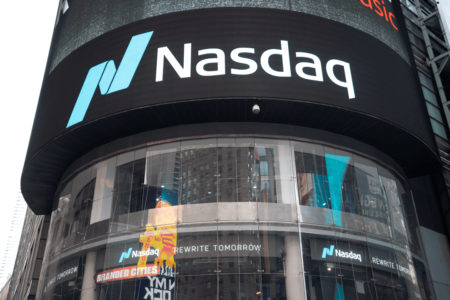Nasdaq has introduced technology to calculate investment portfolio risk using machine learning.
The new functionality, announced Thursday (Oct. 17), will be woven into Nasdaq’s Calypso platform, used by banks, insurers and other financial institutions to do things like access capital markets, manage risk and adhere to regulatory reporting obligations.
“Nasdaq’s machine learning technology is combined with a sophisticated form of mathematical modeling that can significantly improve the efficiency of conducting the most complex trading and regulatory risk calculations,” the organization said in a news release.
“It transforms the time taken to price financial instruments across millions of scenarios, processing the most complex products up to 100 times faster whilst maintaining high levels of accuracy. It can also significantly reduce the amount of physical infrastructure required to run those calculations.”
Gil Guillaumey, who heads Nasdaq’s capital markets technology, notes that financial institutions that trade over-the-counter (OTC) derivatives must carry out increasingly complicated calculations to meet internal risk controls and regulatory mandates.
“Maintaining the necessary infrastructure and systems can be outrageously expensive, inefficient, and increasingly impractical regardless of cloud elasticity strategies,” he said.
“The sheer scale of computing power required to meet the most demanding regulations, alongside the strategic benefits of more accurate real-time analytics, is driving a profound rethink about how we can leverage AI to reduce the cost of compliance.”
The news comes as banks are increasingly turning to artificial intelligence (AI) to streamline compliance and reduce risk, as PYMNTS wrote earlier this week. Industry experts argue this technology can make regulatory testing and monitoring significantly more efficient and accurate.
“The regulatory burden and cost to comply is only growing, which leaves banks doing more testing and monitoring with the same amount of resources,” Leslie Watson-Stracener, managing director and regulatory compliance capability leader at Grant Thornton Advisors LLC, wrote in a recent blog post.
She cautioned that increasing pressure on compliance teams “can lead to stress, burnout and human error.”
Wes Luckock, senior manager of advisory services at Grant Thornton, predicts a broader impact beyond just regulatory work: “Across the business cycle, AI will be coming into play in an end-to-end manner. It’s not just going to be a couple tasks throughout the cycle — it’s going to be the entire cycle.”
Still, experts warn that human oversight remains critical. Watson-Stracener advises, “Always make sure your board has oversight of your AI practices. And test your results.”
Read More: Nasdaq Turns to AI to Aid Bank and Insurance Risk Assessment

